Amateur astronomers use different types of telescope mounts for various reasons.
The two main types of telescope mounts are Equatorial and AltAzimuth.
Each type has its pros and cons, and this article will help you understand the difference, whether it’s for your first telescope or your new telescope.
In this article, you get
A detailed look at the two common types of telescope mounts
A solid understanding of why Earth’s rotation may impact your preference
A list of the advantages and disadvantages of each type of mount
By the end of this article, you’ll understand the difference between an Equatorial Telescope Mount vs AltAzimuth.
Let’s dive right in.
Recommended For You
WHAT IS TELESCOPE MOUNTING?
To ensure the fundamentals are understood, I’d like to briefly explain what a mount is and why you need one.
When people use the word telescope, sometimes they refer only to the telescope tube itself. Other times they mean the complete package that includes the telescope tube, the mount, and tripod legs. For this article, I won’t be discussing the camera tripod.
I’ll focus on the type of telescope mount and how it impacts your telescope.
The telescope tube is more accurately called an Optical Tube Assembly (OTA). The mount itself is technically not part of the telescope. I am referring to only the OTA for this article when I say telescope.
The mount is a separate device that I do not include in the term telescope.
The mount is the device to which the telescope attaches. It provides two essential functions.
- The mount provides a solid foundation that supports the telescope
- The mount allows you to point the telescope in any particular direction
Now that we have the basics out of the way, we can dive deeper into the different types of mounts and know that we’re only talking about the base that supports and moves the telescope.
If you’re brand new to telescopes, read my beginner series articles on telescopes:
- What is a Newtonian Telescope?
- Dobsonian Telescope vs Newtonian
- Refractor Telescope vs Reflector
- Why is my telescope upside down?
- How to Clean Telescope Mirror: 11-Step Guide
WHAT IS ALT-AZIMUTH MOUNT?
I’ll start by explaining the alt-azimuth mount, as it’s the more straightforward kind of mount of the two. It’s also easier to understand.
ALT-AZIMUTH DEFINITION
Alt-Azimuth refers to two directions or axes that the mount can move. It moves vertically, up and down, and horizontally, left and right.
ALTITUDE

Altitude is easy to understand because we’re used to hearing it.
It simply means how high something is above the ground.
In this case, Altitude refers to the angle between the horizon and the object you’re observing. The vertical axis is up and down, which is the Altitude.
AZIMUTH
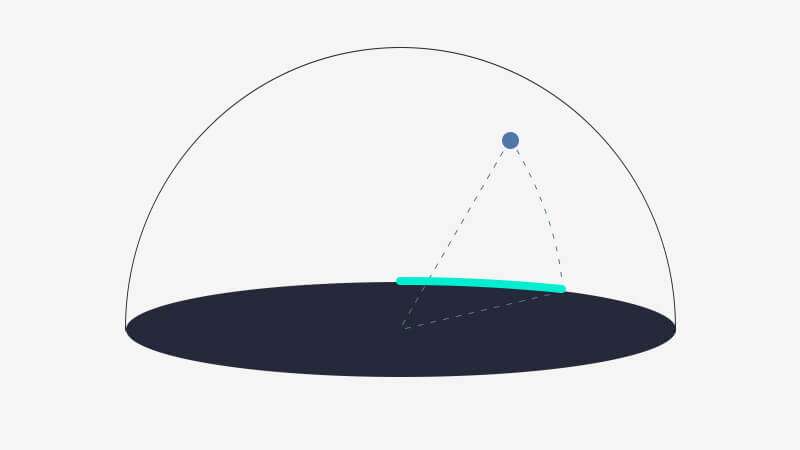
Azimuth may be a new term for you. It also measures the angle along the horizontal axis, away from a cardinal direction, like North.
For example, East is 90 degrees horizontally to the right of North. East has an Azimuth of 90 degrees from the North.
Using Azimuth and Altitude, you can precisely describe any point in the sky. The reference frame is your horizon when you’re facing North.
ALT-AZIMUTH MOUNT DIAGRAM
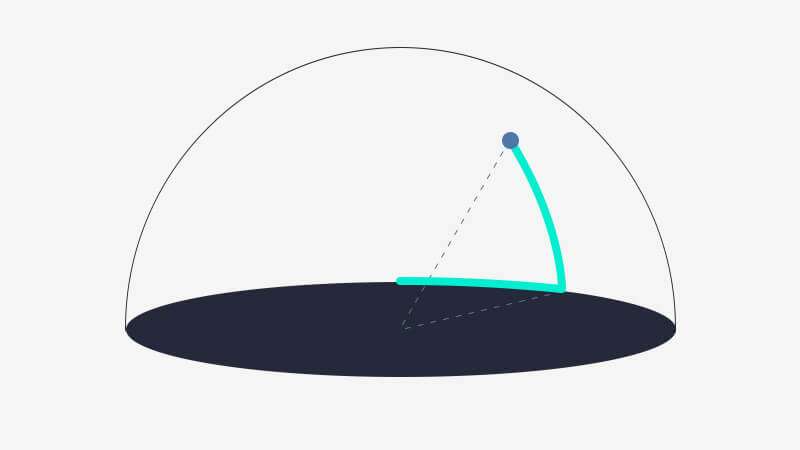
Alt-Az mounts move the telescope left and right (Azimuth) and up and down (Altitude).
DOBSONIAN MOUNT
You may have heard the term, Dobsonian Mount.
These mounts are alt-azimuth mounts that exclusively hold Newtonian reflecting telescopes.
Their main benefit is that they are inexpensive to manufacture, allowing you to have larger telescopes at a relatively low cost.
A Dobsonian Telescope is simply a reflector telescope on an alt-azimuth mount.
HOW TO USE ALT-AZIMUTH MOUNT
Using an Alt-Azimuth mount is pretty simple.
Start by securely attaching your telescope to the alt-azimuth mount. Then turn the telescope horizontally along the Azimuth axis to the point you want to observe. Finally, tilt the telescope along the altitude axis until you find the object in the sky.
Later in this article, I’ll discuss the advantages and disadvantages of the alt-azimuth mount.
For now, let me introduce the equatorial mount.
WHAT IS EQUATORIAL MOUNT?
An equatorial mount is slightly more complicated to understand than an Alt-Azimuth mount.
The complication comes from the word equator, which refers to the celestial equator and not the one on Earth that you’re used to hearing.
CELESTIAL EQUATOR
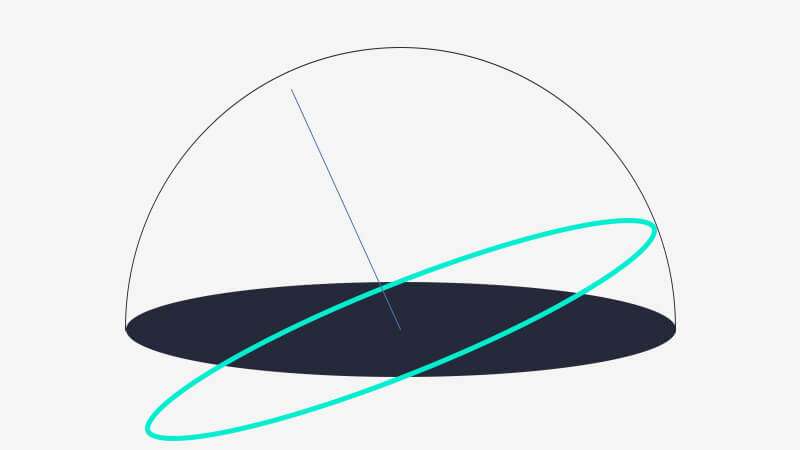
The Celestial Equator refers to the equatorial coordinate system, which uses the Earth’s axis of rotation as its reference frame.
The celestial equator is halfway between the North and South Celestial Poles.
The Earth’s axis of rotation goes through these two poles.
EQUATORIAL MOUNT DIAGRAM

EQ mounts use the equatorial coordinate system and appear tilted with respect to the Earth’s horizon.
Left and right move along the celestial equator.
Up and down are relative to the polar axis, which runs through the North Celestial and South Celestial Poles.
HOW DOES AN EQUATORIAL MOUNT WORK?
The equatorial mount works by having one of its axis aligned with the rotation of the Earth.
As celestial objects move in an arc through the night sky relative to the ground, a telescope’s left and right movements on an equatorial mount also move along this celestial ark.
RIGHT ASCENSION

An equatorial mount’s left and right axis is its Right Ascension (RA).
Right Ascension uses time units, like hours, minutes, and seconds. The reference point for the RA axis is the vernal equinox.
The vernal equinox is where the sun rises along the celestial equator on the first spring day.
DECLINATION AXIS
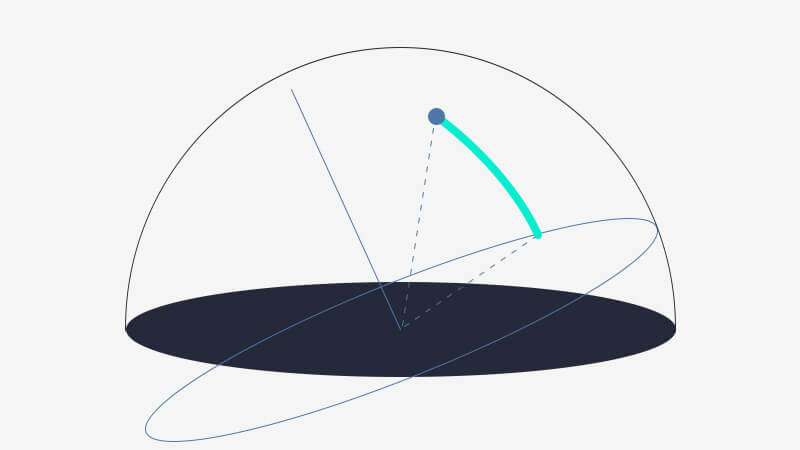
Declination (DEC) is the up-and-down axis of an equatorial mount.
Declination comes from a Latin term that means to bend a way or bend down.
The celestial equator has a declination of 0 degrees. The North Celestial pole has a declination of 90 degrees.
GERMAN EQUATORIAL MOUNT VS EQUATORIAL MOUNT
You may have heard of the term German Equatorial Mount and wondered what it is.
A German Equatorial Mount (GEM) uses a counterweight to balance out the weight of the attached telescope. The other style of Equatorial Mount is a fork mount.
A GEM can typically carry heavier loads than a fork mount.
WHAT IS THE DIFFERENCE BETWEEN THE ALT-AZIMUTH MOUNT AND THE EQUATORIAL MOUNT?
Now that we have the basics out of the way, we can get to the fun stuff.
WHAT’S THE BEST TELESCOPE MOUNT? – EQUATORIAL VS ALTAZIMUTH
As is usual with most “what’s the best” questions, the answer is “it depends.”
The most straightforward answer is that an alt az mount is easiest for visual use. Up and down on the mount are up and down in the sky. Nice and simple.
For astrophotography, on the other hand, you must use an Equatorial Mount.
The celestial object you are photographing travels along an arc in the sky as the whole sky rotates around the Earth’s axis of rotation.
Astrophotography requires long exposures of multiple photos to create a final image. As the celestial object moves along its arc path, its orientation changes to the ground. It remains fixed to the left-right axis of the Right Ascension.
Moving your telescope and camera along the Right Ascension assures you capture all your photos using the same orientation.
ALT-AZIMUTH MOUNT ADVANTAGES AND DISADVANTAGES
The advantages of alt-azimuth manual mounts are straightforward.
- They are easier to understand
- They don’t require alignment to the Earth’s axis of rotation
- They are the simplest type of mount to use for visual observing
- Terrestrial observing is easier
Some disadvantages of alt-azimuth mounts include:
- You have to manually move them along two dimensions (right and up) to track a celestial object in the sky
- For long-exposure astrophotography, the images will capture field rotation because the orientation of the celestial object is changing to the horizon
FIELD ROTATION
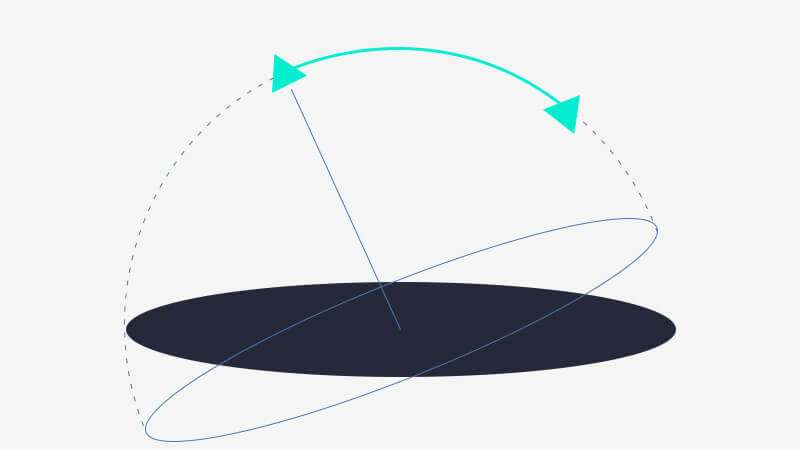
Field Rotation is the apparent change in the orientation of the observed object to the Earth’s horizon.
Celestial objects travel in the celestial sphere, which appears as an arc in the night sky.
EQUATORIAL MOUNT ADVANTAGES AND DISADVANTAGES
The advantages of the Equatorial Mount are
- They track a celestial object using only a single axis of rotation
- They can be easily motorized to automatically and smoothly track celestial objects for long exposure astrophotography
The disadvantages of Equatorial mounts include:
- You need an exact polar alignment to ensure the Right Ascension axis is traveling along the celestial equator
- The German Equatorial Mount requires a good balance of its counterweight to ensure smooth and accurate tracking of celestial objects
ALT-AZIMUTH MOUNT ASTROPHOTOGRAPHY
It is possible to do long-exposure photography using an Alt-Azimuth mount, but it requires more technology.
You can rotate the camera on the back of the telescope or the entire camera with telescope assembly. Both of these solutions solve the problem introduced by field rotation by rotating the camera itself.
Another option is to use an equatorial wedge.
EQUATORIAL WEDGE
An Equatorial Wedge is a small device you add to your altazimuth mount.
The wedge converts the left-right horizontal axis to the Right Ascension axis that tracks celestial objects along their arc in the sky.
If you’re new to astrophotography, I highly recommend using an Equatorial Mount. It will be your best option rather than needing to also worry about field rotation.
EQUATORIAL MOUNT ASTROPHOTOGRAPHY
Astrophotography using equatorial mounts is the standard way of capturing long-exposure times for faint deep-sky objects.
CONCLUSION
In conclusion, there are pros and cons to both the Equatorial Telescope Mount and the AltAzimuth.
Depending on your needs, one of the two may be better.
If you plan on doing long-exposure astrophotography, the Equatorial Mount is required.
However, either mount will work if you only want to do some visual observing or short-exposure photography.
FREQUENTLY ASKED QUESTIONS
ARE EQUATORIAL MOUNTS DIFFICULT TO USE?
No, equatorial mounts are relatively easy to use. Polar aligning the mount is pretty straightforward. Equatorial mounts easily track celestial objects along their path in the night sky. Long-exposure astrophotography requires you to use an equatorial mount.
IS ASTROPHOTOGRAPHY POSSIBLE WITH AN ALTAZIMUTH MOUNT?
Yes, astrophotography is possible with an Altazimuth mount, but I would not recommend it. You can modify your alt-azimuth mount using an equatorial wedge. It may be simpler to use an equatorial mount to avoid field rotation.




